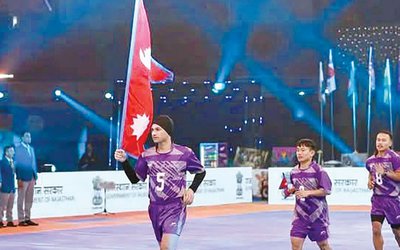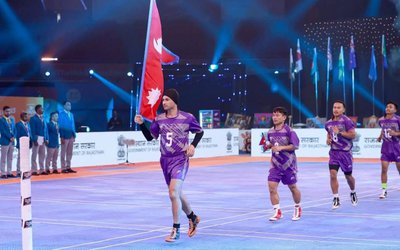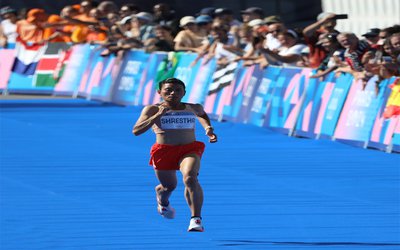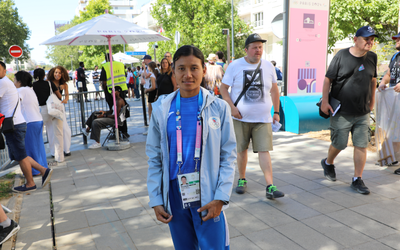
It
would not be wholly inaccurate to suggest that Nepal has a large void to fill
in the discipline of sports. Despite gaining limited success in cricket, we
have yet to have a team or an individual who is at an elite level in a sport.
Mira Rai is an exception to this as the ultra-runner has numerous victories at
the international stage against elite competition and her success can be
replicated. There are several established conditions that would allow Nepalese
people to be very successful in long distance running events.
Firstly,
Nepalese people possess the physique that would allow them to be more
successful in long-distance running. The average Nepalese male stands at around
163cm (5’4) whilst the average female around 151cm (5’). These figures are both
lower than the global average. And being shorter is an advantage when it comes
to long-distance running. Having a smaller frame means that you weigh less
therefore less energy is expended in carrying a heavier frame. This would allow
a shorter runner to run more efficiently and allow the energy to be used during
the latter parts of the race. Great runners also possess short stature as Haile
Gebrselassie (164cm,5’5) and Kenenisa Bekele (167cm, 5’6) both have
accomplished a great amount in the sport.
Diet
also plays a major role in the development of an elite athlete. Professional
athletes hire nutritionists to ensure they have the optimal diet to help them
become successful. Carbohydrates is the primary source of energy and
long-distance runners often consume as much carbohydrate rich food as possible
in the build up to a race (carbo-loading). Kenya has been very successful in
developing long distance runners such as the likes of Asbel Kiprop, David
Rudisha and Lornah Kiplagat and this can be partly contributed to their diet.
The staple food of Kenya is named “ugali” which is made from boiling maize
flour until it is thick and then served with vegetables and meat. This is
almost identical to our traditional food of "Dhindo" which is also
made from flour and cooked in boiling water. Furthermore, another staple food
of Nepal, rice, is also an excellent source of carbohydrates which is essential
for a long-distance runner.
Nepal has a premier advantage over the rest of the world when it comes to developing long-distance runners. Nepal is second only to Bhutan in terms of average elevation above sea-level and this is highly beneficial towards the development of an endurance athlete. Higher levels of elevation lead to a reduced partial pressure of oxygen meaning that there are less oxygen molecules present. To combat this human body adapts and slowly increases the amount of red blood cells. This is beneficial to a long-distance runner as the increase in red blood cells leads to more oxygen molecules being transported to respiring tissues during a strenuous race. The population of Nepal has acclimatised to conditions with less oxygen and training at these altitudes will only improve this. Kenyan and Ethiopian athletes also share this advantage as they too have regions in their countries which are at high altitude such as Iten (2400m) and Addis Ababa (2355m). Nepal has an average elevation of around 3200m which will be very beneficial to develop endurance athletes.
Producing
successful long-distance runners will also result in other long-term benefits
for Nepal. If athletes compete at high levels such as the Olympics or the World
Championships, this would raise the morale of the country as it would give the
people someone to cheer for. Furthermore, the success of our long-distance
runners would also be very attractive to athletes abroad. Almost all elite
runners travel to Kenya or Ethiopia to train at high altitude on an annual
basis and Nepal could be another destination on their list. Elite athletes have
big name sponsors such as Nike, Adidas and Puma and if they decide to train in
Nepal it would do wonders for the local community.

Raunak Mainali
Raunak Is an undergraduate student at the University of Kent and also the vice president of Kent Athletics and cross country.
- Hedging- A Viable Solution To Nepalese Diplomacy
- Sep 05, 2019















